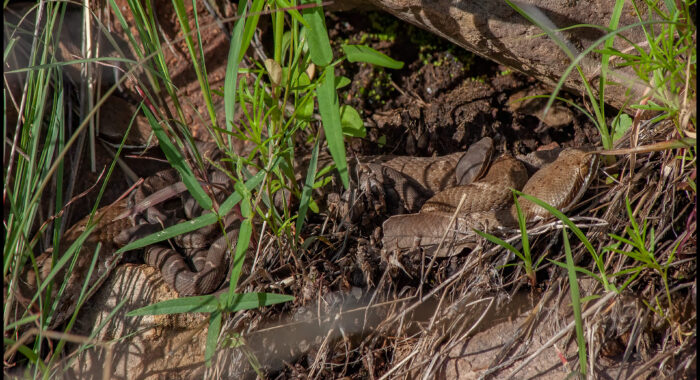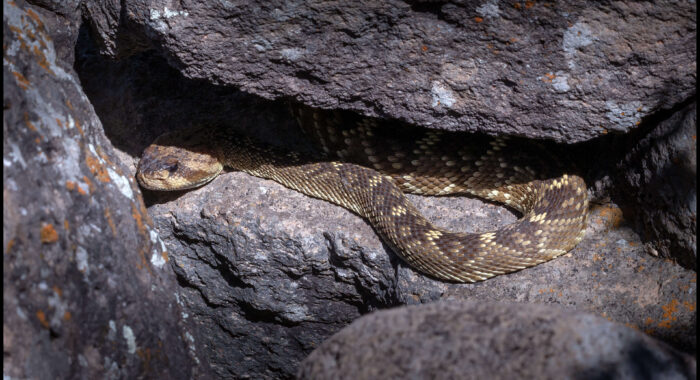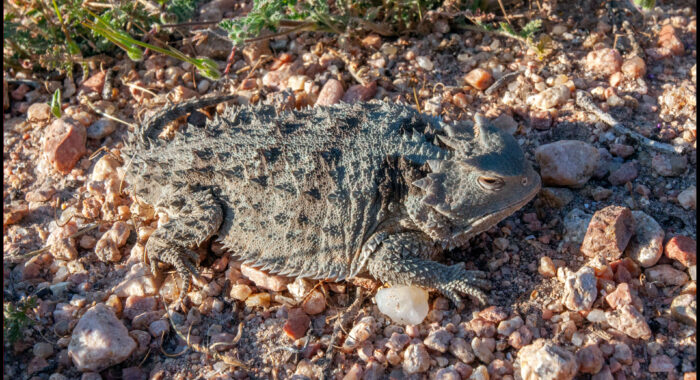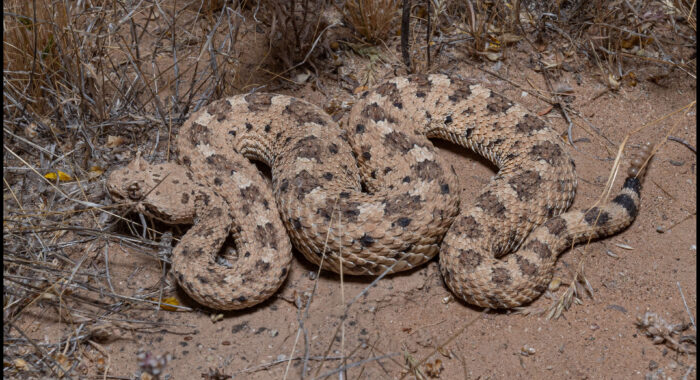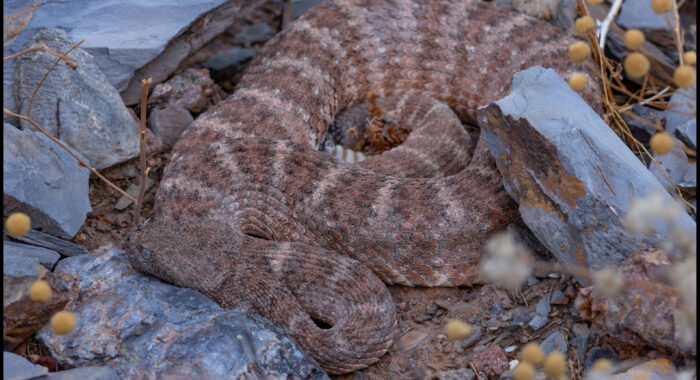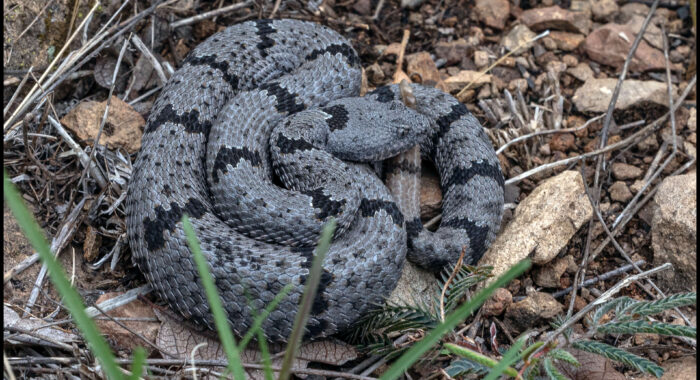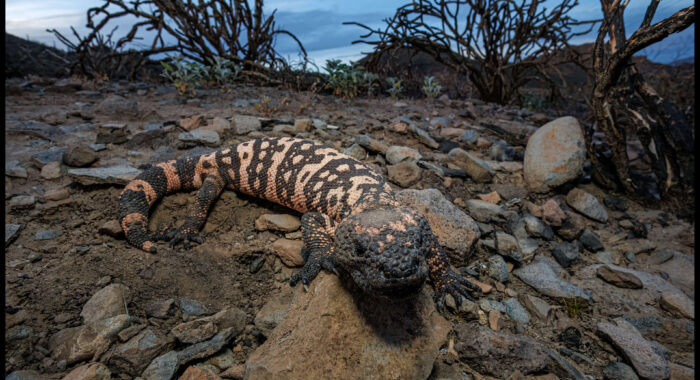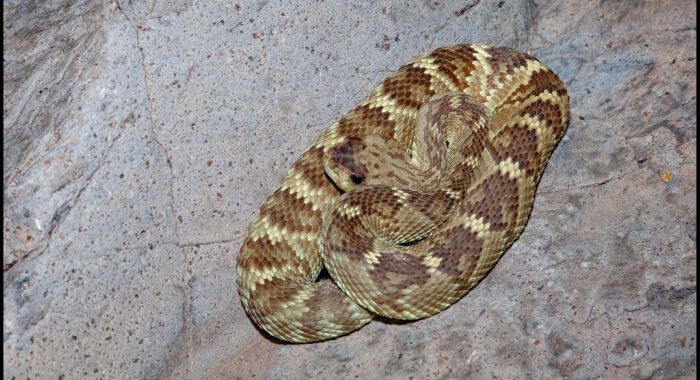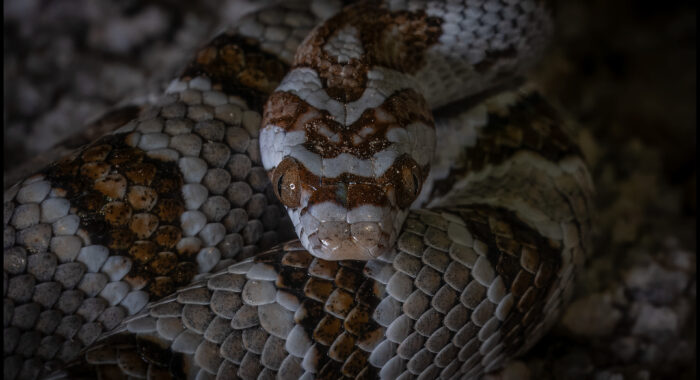An Arizona Ridgenosed Rattlesnake with her newborns. Like many snakes, including all vipers in the U.S., these rattlesnakes do not lay eggs. They give live birth to young, which stay with the mother for a period of time afterward. Once they’ve shed skin for the first time, around ten days later, they will disperse. In […]
Continue reading..Arizona Ridgenosed Rattlesnakes With BabiesA Blacktailed Rattlesnake hiding out just outside its den. It took a few years to zero in on the exact spot, surveying the area in early spring and late fall and tracking where snakes were found in early egress. Eventually, there it was – with just two snakes in it to start, but the start […]
Continue reading..Blacktailed Rattlesnake DenA Greater Short-horned Lizard from central Arizona. No doubt the comments will be full of “we call em horny toads as kids”. But, there’s more to it 🙂 These are lizards, rather than toads … which is a surprise to many born-and-raised Arizona residents. There are also SEVEN distinct species of them in our state, […]
Continue reading..Greater Short Horned LizardA Sonoran Sidewinder from the Phoenix area, out and about late at night as they tend to do. This one is large, for a small species, and for a male. These snakes are under two feet long, with females being slightly larger as full-grown adults. There are several reasons this may be the case, one […]
Continue reading..Sonoran SidewinderA Southwestern Speckled Rattlesnake resting along the top of a drainage after a night out. During the summer months, these and other rattlesnake species are primarily nocturnal, being encountered by people mostly in the hour before and after sunrise. As soon as the sun reaches the area, these snakes make a beeline for their aestivation […]
Continue reading..Speckled Rattlesnake At Dawn and Thermal TolerancesA Banded Rock Rattlesnake from southeastern Arizona.
Continue reading..Banded Rock Rattlesnake from ArizonaA Gila Monster moving through a burn scar in central Arizona. Last year, fire from an illegal campfire swept through the area, fueled by invasive grasses. This one managed to survive, but shows signs of how close it came to death – the top of its head and patches on its tail are black scars. […]
Continue reading..Gila Monster In A Burn ScarA Rainbow Boa we found in Peru last year. These are popular snakes in the pet trade. In the wild, they can look just as vibrant. But unlike the captive-born pets, these snakes show signs of a hard life in the wild. A variety of scars, ticks, and dings adorn all of them. And unlike […]
Continue reading..Rainbow Boa With A Lifetime Of ScarsA young Blacktailed Rattlesnake resting on top of a boulder. During the heat of summer, deep canyons offer cooler conditions, and water trapped in pools and wet sand months after the last rain. On the hottest, driest nights, we can often predict where these snakes are by the presence of cottonwood and native bunchgrass.
Continue reading..Blacktailed Rattlesnake At WaterA Sonoran Lyresnake seen late at night on a hike in a remote mountain range in extreme southwestern Arizona. These cryptic, nocturnal snakes live in rocky areas, where they take a variety of prey using venom. But, unless you’re a lizard, you have nothing to fear from this snake … if you ever even see […]
Continue reading..Sonoran Lyresnake
